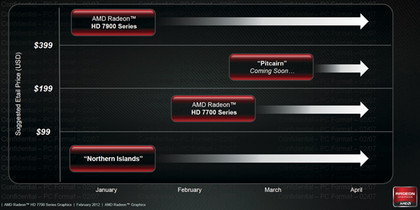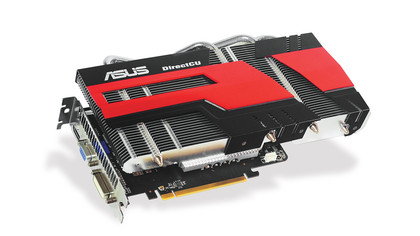The past, present and future of multi-GPU technology
We take a look at multi-GPU technology from AMD and Nvidia

Multi-GPU technology has come a long way in the last few years, to the point where it's now a legitimate use of a second GPU, instead of being a horrible waste of silicon and shaders.
In the before time though, the long, long ago - well the early Noughties - multi-GPU technology was almost forgotten. If you recall, 3dfx had introduced the original SLI (scan-line interleave) technology in 1998 with its Voodoo 2 cards, which was left on the shelf as Nvidia picked up the pieces of the graphics company.
The green goblins did reintroduce it in 2004, though, renamed as the scalable link interface. ATI followed suit the following year and introduced its own multi-GPU tech, CrossFire.
Neither of these technologies were really worth the cost, the effort or the power. Completely aside from the fact that twin-GPU setups were a pain in the derriere to set up, requiring certain motherboard chipsets and sometimes specific master cards (in the case of ATI), they rarely delivered worthwhile performance boosts.
Sometimes - and in a few rare cases this is still true - adding in an extra GPU confused software and drivers so much that the performance figures slipped into reverse and you ended up with slower frame rates.
Double dose
Kudos then to the two big GPU manufacturers for persisting in developing the technology, despite almost global derision. Now we've finally hit a time where throwing a second GPU into the equation will pretty much give you the desired doubled performance we've always wanted from such a setup.
There are still limitations, though, including Nvidia charging a premium for licensing SLI compatibility on motherboards (now that it no longer makes chipsets itself). The key limitations though are on what graphics cards can be used together in a multi-GPU array. ATI's master/slave beginnings aside, it was vital to have the exact same graphics card in a setup to have any chance of it working.
Get daily insight, inspiration and deals in your inbox
Sign up for breaking news, reviews, opinion, top tech deals, and more.
On the Nvidia side, things have changed a little to the point where now it just has to be the same GPU, and actual manufacturer's badges, such as Asus or MSI no longer have any bearing on SLI's functionality. This means you can now pair up a couple of GTX 460s but not a GTX 460 and GTX 465, as they're different parts completely.
The situation is different on the AMD side, though. Instead of just linking up identical cards, you can CrossFire any card within the same GPU family. So all the Cayman-powered HD 69xx cards, for example, can be used in the same system.
An interesting side effect of this is that sometimes older GPUs get resurrected in subsequent generations. For example, the HD 5770 and HD 5750's Juniper GPU was reintroduced in the HD 6770 and HD 6750, so you can mix and match these cards with impunity.
This has happened on the Nvidia side before, with the 9800GTX+ and the rebranded GTS 250 actually being essentially the same card, and so were able to be used in SLI together.
Islands apart?

It's unlikely that we're going to see the same thing happening with the next generation of graphics.
AMD has said that it is going to continue the lower-end Northern Island cards alongside the new Southern Island generation, instead of rebranding the HD 66xx series and below as HD 76xx (See opposite page, top). But if you do see a HD 76xx card in the wild you can bet it will CrossFire happily with a corresponding HD 66xx card.
The new HD 7000 series cards will follow the same CrossFire compatibility curve, with the HD 7950 and HD 7970 working happily together in the same system. AMD does say though that for optimum scaling identical cards is always the best way to go.
The same goes for the lower-end HD 7770 cards; though their little brother, the HD 7750, actually lacks a CrossFire connector in the reference design. We don't yet know whether add-in board (AIB) manufacturers will develop their own PCB designs with that connector included, but if there's a demand you can bet the likes of Sapphire and HIS will take a long hard look at it.
Open approach

At this low-end though it's unlikely people are going to want to CrossFire cards below the HD 7770; there simply isn't the performance return. For the money you'd spend on two HD 7750s you could buy a superior single card. But AMD's more open approach to multi-GPU technology is great for the consumer.
If you'd picked up a HD 6870 a while back and wanted a performance boost, being able to drop in a £99 HD 6850 makes good financial sense. And this open approach isn't just limited to the cards themselves. AMD has ensured that the option is there for everyone, so long as they have a second x16 PCIe slot on their motherboard.
While Nvidia only allows certain licensed boards to have its SLI tech, AMD has spread its technology around liberally. When you're setting up a new machine, or looking to replace the graphics array in an existing rig, we would generally say that no matter the performance benefits, you would be better off picking the best single graphics card you can afford rather than choosing two cheaper cards from the off.
There are still driver issues between certain games and multi-GPU setups, so a single card rig is generally going to be more stable. But with the best single GPU you can afford you can always add in a second card at a later date. And if you're on the AMD side you may even be able to pair it with a faster card as prices drop over time, without the mobo compatibility worries that surround SLI.